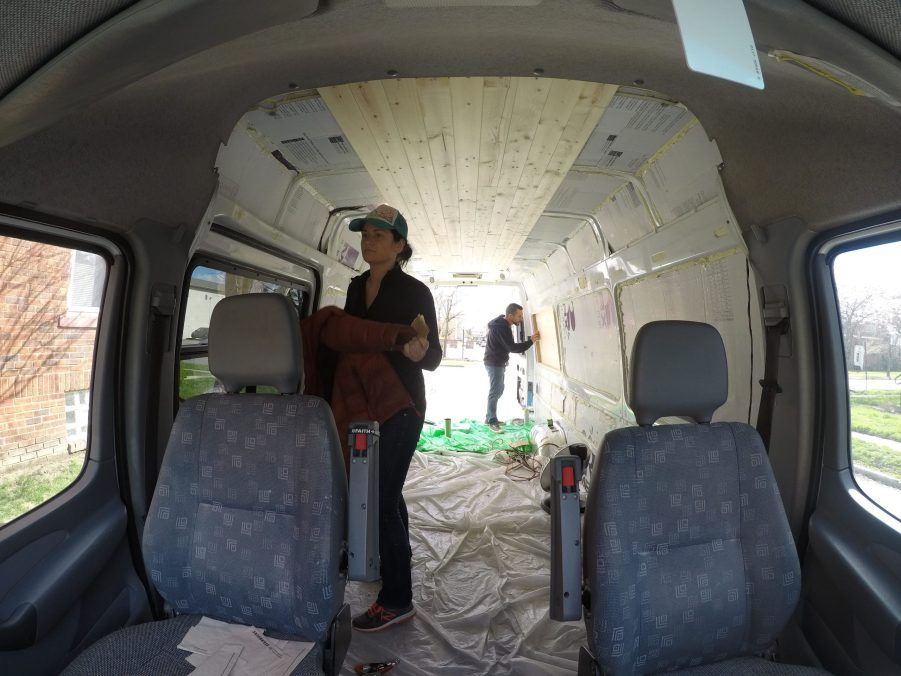
Bob Wells Is 1 of the Original VanLifers
The 63-year-old YouTube personality Bob Wells has been residing in his van since 1995 long before VanLife was a thing. As a matter of fact, Wells is viewed as the Godfather of the movement. Today, Wells is the President of Homes On Wheels Alliance, Inc. and Founder of Rubber Tramp Rendezvous (RTRs). He has also become somewhat of a YouTube sensation with his tutorials on van construction.
Even though VanLife seems like a relatively new trend, it’s not. Between 1960 and 1980, people were converting full-sized vans into living spaces. During that period, the movement had garnered enough popularity that multi-day van festivals were held across the country. Camper van technology might be a lot better today, but even back then van conversions could be lavish.
Bob Wells: the man behind the camper van
Over two decades ago, Bob Wells wound up living in his Chevy box truck after a messy divorce. With only $1,200 a month, Wells felt like he had hit rock bottom. But with stoic determination, he turned his misfortune into a movement.
In an article by the New York Post, Wells is referred to as a “bearded evangelist for the houseless community.” Along with his YouTube channel, he founded and runs the very popular website CheapRVLiving.com.
In an interview with PBS NewsHour, Wells eluded that he makes pretty good money these days. When asked what he does with all of his money, he told the interviewer that he gives it away to people who need it.
For Wells, the world he once knew is unrecognizable and cutthroat. After making his makeshift camper, his new way of life allowed him to escape “the crushing realities” of the world. The entire point behind Wells’ movement is to help “vandwellers stop feeling like victims and become empowered,” the New York Post article stated.
Wells holds his annual gathering in Quartzsite, Arizona, where thousands of road warriors gather to show support for each other. Quartzsite has become a climatological refuge during the winter months thanks to its balmy, sunny, and arid weather.
With around 2 million VanLife enthusiasts passing through the area annually, Quartzsite is known as America’s boondocking capital. The land might not be the most beautiful in the country but the Bureau of Land Management allows travelers to camp there for up to two weeks at a time. And for a traveling community looking to live as cheaply as possible, that is a great asset.
Why the camper van and VanLife community has exploded recently
In October 2019, the hashtag #vanlife had more than 6 million posts on Instagram. The gig economy, flexible work arrangements, and the Marie Kondo-inspired minimalism movement have played significant roles in making the nomadic lifestyle popular.
While each vanlifer has their own reason for choosing the nomadic lifestyle, most of them do it out of necessity, much like how Bob Wells started out.
Those who aren’t retirees or freelancer nomads do things such as work-camping to bring in an income. Work-camping isn’t limited to working on campgrounds as is assumed; whoever travels in an RV or camper van and works part-time as they travel the country is considered a workcamper.
Then there are the rare few who, like Wells, make a decent living from producing blogs and YouTube vlogs about living the VanLife.
Bob Wells’ influence on the VanLife movement

The difference between most people trying to do what Wells does and Wells himself is that he launched his site right before the housing crisis. As more middle-class Americans found themselves unable to pay rent and mortgages, they were forced to live in their vehicles.
It was during this time that his website started receiving a lot of traffic as people were looking for advice on how to live the nomadic lifestyle. In other words, Wells was in the right place, doing the right thing, at just the right time.
His humble, down-to-earth personality not only earned him a lot of love but inspired people from all sorts of demographics, backgrounds, generations, and classes to join the VanLife movement. This is why, despite Wells mostly catering to Boomers, his content has outlived product placement-driven gimmicks like #vanlife.


